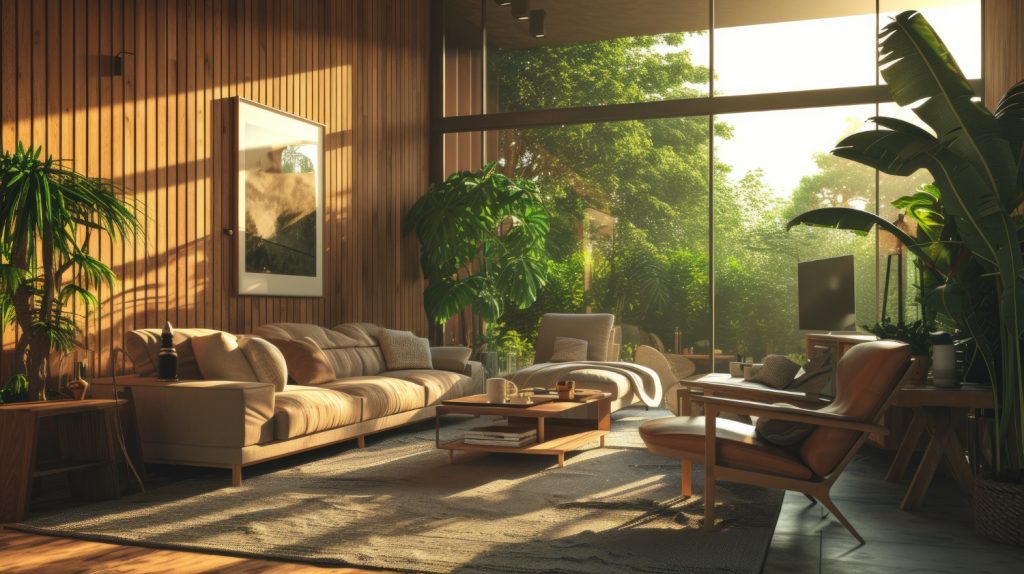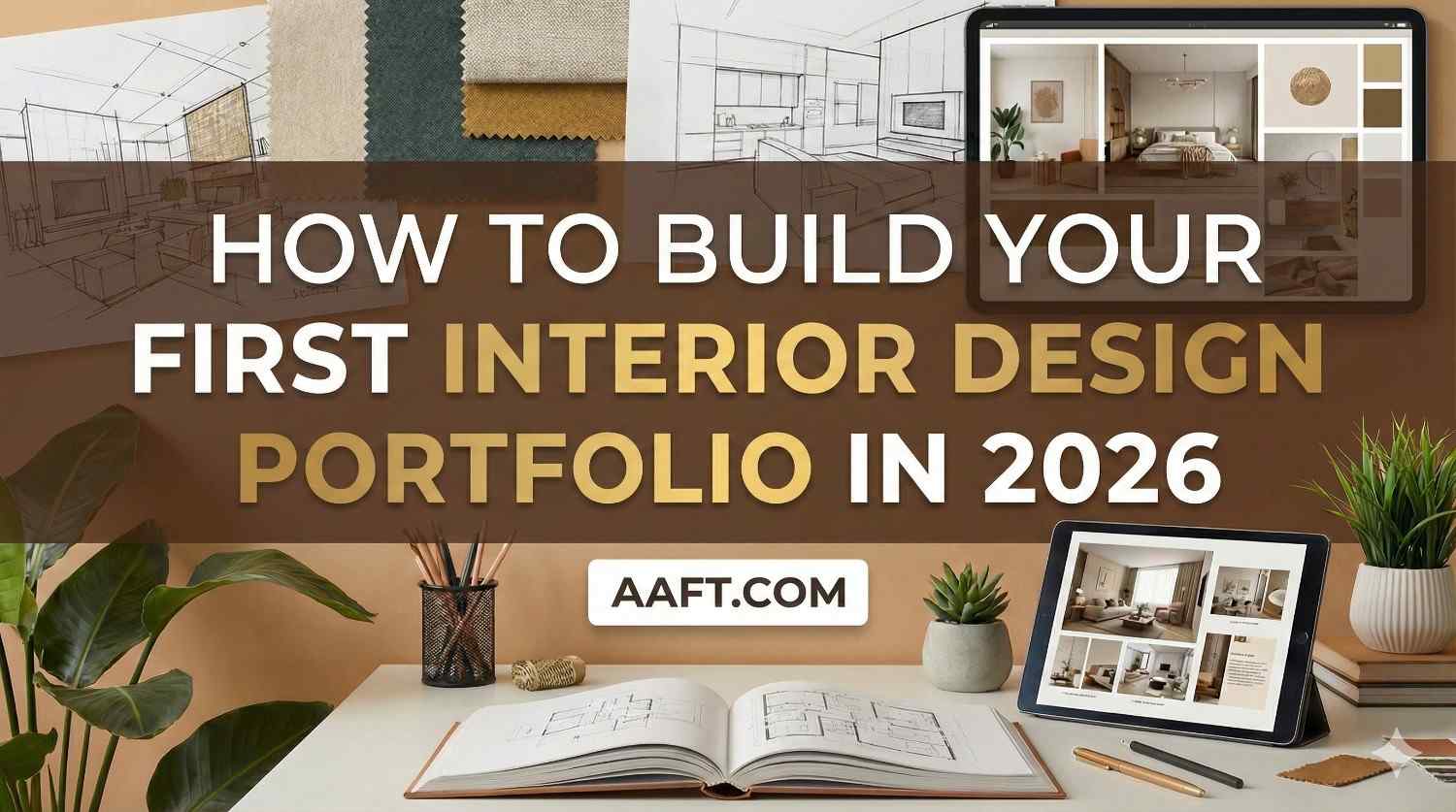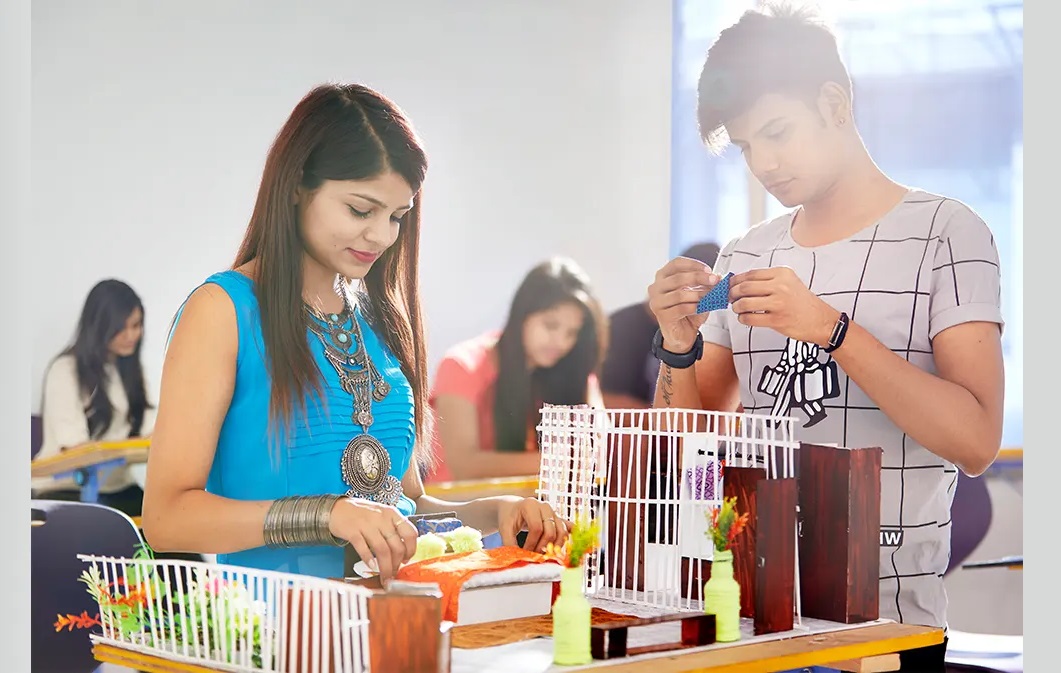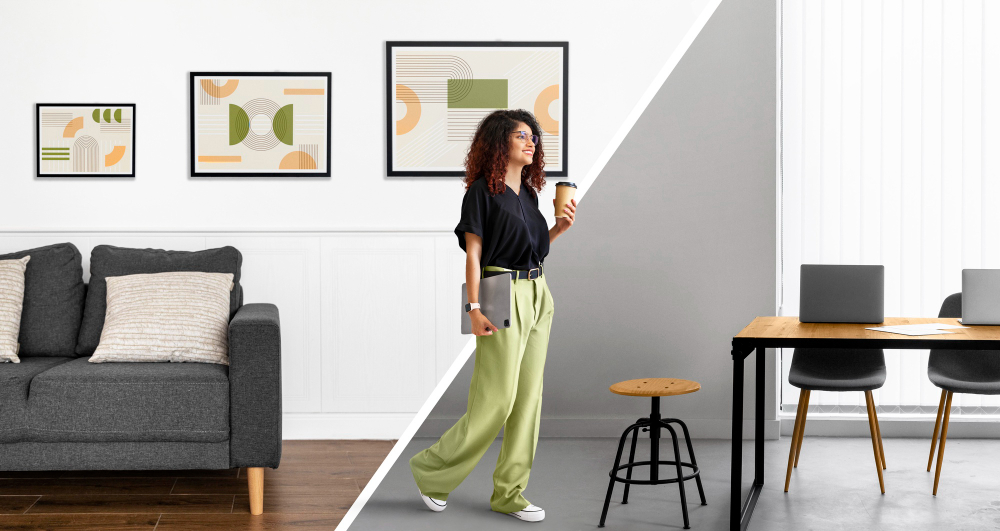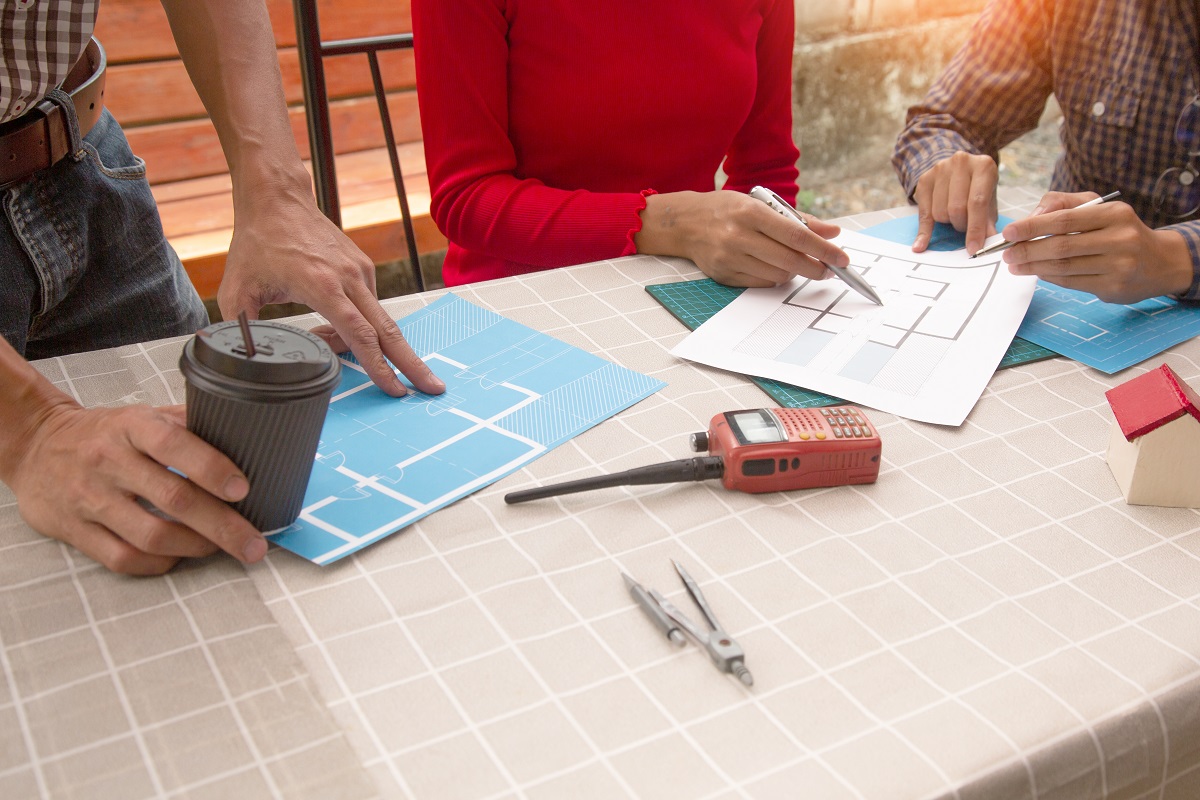Sustainable and Stylish: Incorporating Eco-Friendly Practices in Interior Design Courses
Everyone must have heard the word sustainable. It’s one of the most trending words of the 21st century and it is here to stay for the sake of the future because we have to keep the situation of the nation in mind.
Sustainability is one of the major concerns of the nation at this point.
As the development began, it became natural for the people of the nation to accept whatever was coming its way. But now that there are many consequences taking place of careless development without any oversight of the environment, people are becoming aware of the point that it’s important to incorporate sustainable practices in real life as well. It is also important to get into practices that are eco-friendly and sustainable, especially in activities that happen every day, like interior design.
In today’s world, the biggest trend and challenge in the interior designing industry is to make designs that are eco-friendly and sustainable. Interior designers are expected to make the designs using more greens, incorporating rainwater harvesting, and also the use of bamboo into the designs.
Do you want free career counseling?
Ignite Your Ambitions- Seize the Opportunity for a Free Career Counseling Session.
- 30+ Years in Education
- 250+ Faculties
- 30K+ Alumni Network
- 10th in World Ranking
- 1000+ Celebrity
- 120+ Countries Students Enrolled
Environmental experts believe that sustainability should be a part of our daily lives. Saving energy and incorporating eco-friendly designs must be the approach of every designer.
- The primary goal of a designer is to make the designs usable and comfortable.
- The secondary goal of a designer must be to make the designs sustainable. It is highly important to save nature for future generations.
But, what are Sustainable Interior designs?
What are sustainable designs?
Designs and practices that aim to minimize the carbon footprints or reduce the effects of negative environmental effects already caused in the environment are sustainable.
Book Now →
The main objectives of sustainable design should be to:
- Minimize waste
- Make the designs reusable and recyclable
- Create a solid healthy environment for the nation
- Reduce the utilization of non-renewable assets
- Save water
- Save electricity
Here are some tips and practices that can be incorporated into Interior design that would make your place sustainable and stylish.
Here are 5 steps to make the designs sustainable and eco-friendly:-
By incorporating these few steps into the designing process interior designers would be able to take healthy and easy steps towards the achievement of a sustainable environment.
Do you want free career counseling?
Ignite Your Ambitions- Seize the Opportunity for a Free Career Counseling Session.Reduction of Waste
The awareness and trend for the need for sustainable thinking is experiencing a growing interest, such as recycling, upcycling, and repurposing. People no longer hesitate in using secondhand products or repurposing products. Fortunately upcycling and repurposing in today’s era is considered thoughtful and creative.
The approach from the designer’s side should be to use raw materials that have long-term usage and also make multipurpose products. The designers should also look up how they can recycle waste materials to make useful and creative products. They can look up to the waste materials as their raw materials.
Maximize the Use of Space
Efficiently using the space can reduce the requirement for huge spaces for everyone. If people are comfortable and happy in their spaces they won’t need to search for big spaces which will reduce the requirement of never-ending construction.
Interior designers must focus on making the house minimalist and increasing closed storage spaces to make the house look bigger and more spacious.
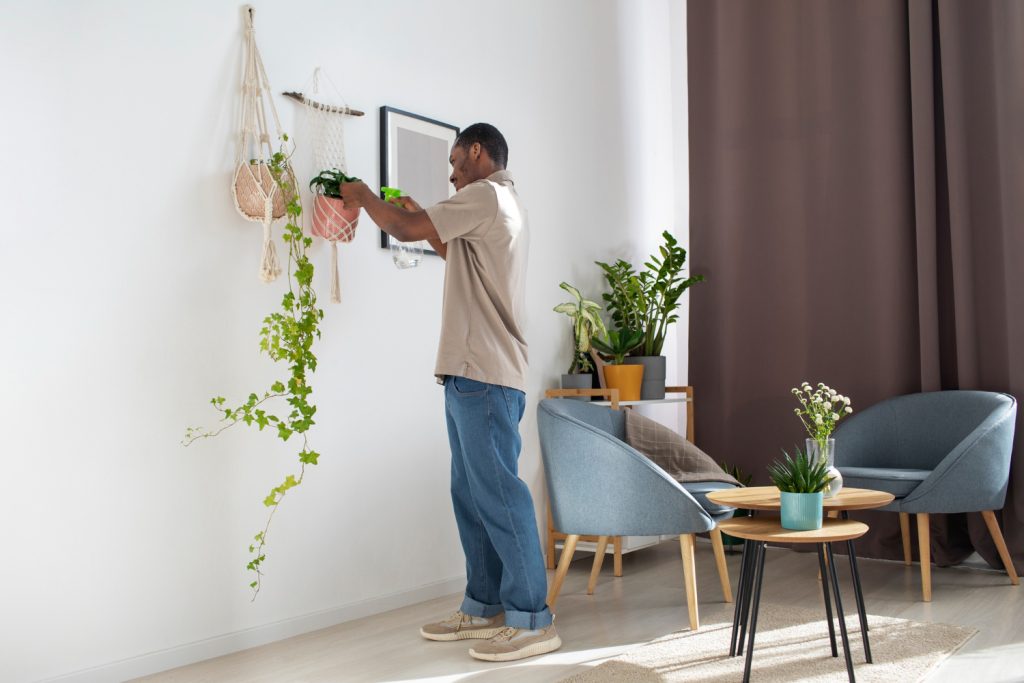
Use of Paints and colors consciously
The paints that are used in the making of the house can make a huge difference. Firstly the paints that are usually used are not most of the time sustainable to the environment and that causes the temperature of the house to increase which in turn makes the person living in the house use the air conditioner and other artificial cooling products which is also harmful to the environment.
Instead of making this a cycle, designers can make this a practice to use paints consciously. There are many eco-friendly options available in the market that can come in very handy.
- Non-toxic paint
- Finishes with “low VOCs”
- Low-biocide paints
- Milk paint
- Water-based paint, stains, and sealants
- Latex paint
Even choosing the color of the room consciously can make the room feel bigger or smaller. The use of soft colors can make the room feel bigger while on the other hand, the use of darker colors can make the room look smaller and less spacious.
Use of Sustainable Raw Materials.
Interior designers must use eco-friendly and traditional raw materials which can also help reduce the unhealthy usage of toxic materials and make the house feel good to breathe.
‘
Here is a list of some eco-friendly materials that can be used in making houses and buildings:-
Steel- Using recycled steel in the building process will be strong and durable. It is also a massive saver in energy costs.
Cob- Cob is a natural material that is super easy to use, and due to its texture, it gives you the freedom to create any shape you could imagine and use your creativity in numerous ways. It creates natural insulation and is very energy efficient.
Cork- Cork is a resilient material, resistant to moisture and any liquid. Due to its structure, it can absorb vibration. Cork harvesting can help in the fight against global warming.
Bamboo- Bamboo has high strength because of its fibers. It is a natural material that can be easily grown and does not harm the environment.
Ferrock- It is actually five times stronger than Portland cement. It is 10 to 25 percent less weight than a structure made of bricks. The actual process of Ferrock development is very much sustainable.
Making use of the Natural Resources
It is very important to create ways to make use of the natural energy that is being provided to the human being. The best example of this is sunlight. There is unlimited sunlight in the world but very few people can use it consciously. Also, the rainwater must be conserved and made use of instead of letting it go into the drainage.
Interior Designers must make the buildings and houses so that rainwater harvesting and solar panels are already built in the houses. This can help reduce the usage of non-sustainable energy and also reduce costs eventually.
Use Materials and Products that are Made Consciously.
An interior designer must consciously choose products that are being used to decorate the product. The approach must be to use local furniture and products from sources that promote safe manufacturing processes.
CONCLUSION
Reducing the usage of harmful and poisonous materials in houses should be every designer’s goal. Creating a sustainable environment is something that everyone is aware of. Sustainable practices should be a priority for all designers.. There are courses and programs offered by AAFT that can teach the best practices to incorporate in homes to make them eco-friendly.

AAFT has been providing the world with limitless creativity and expression since 1993! Through a dynamic and industry-driven curriculum, AAFT provides engaging and captivating articles to persuasive blogs and empowers its readers to explore diverse avenues of creative media education-related content.


